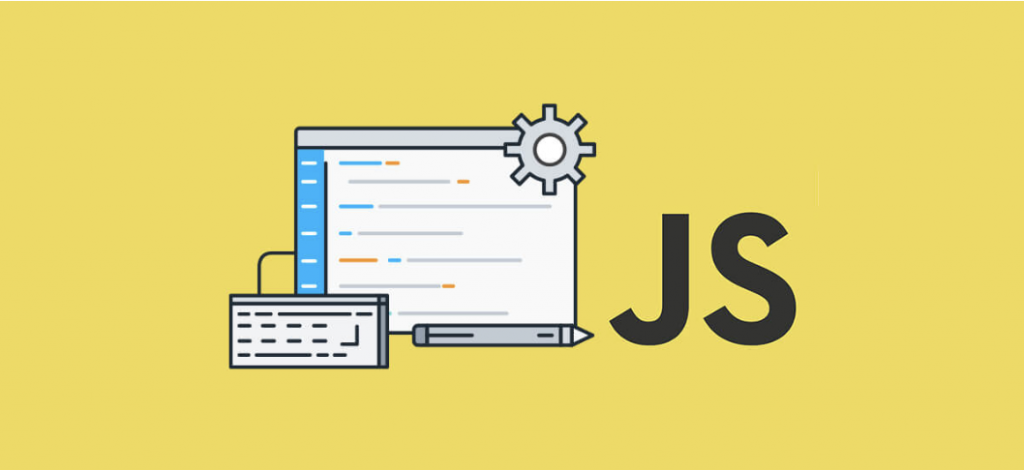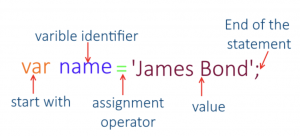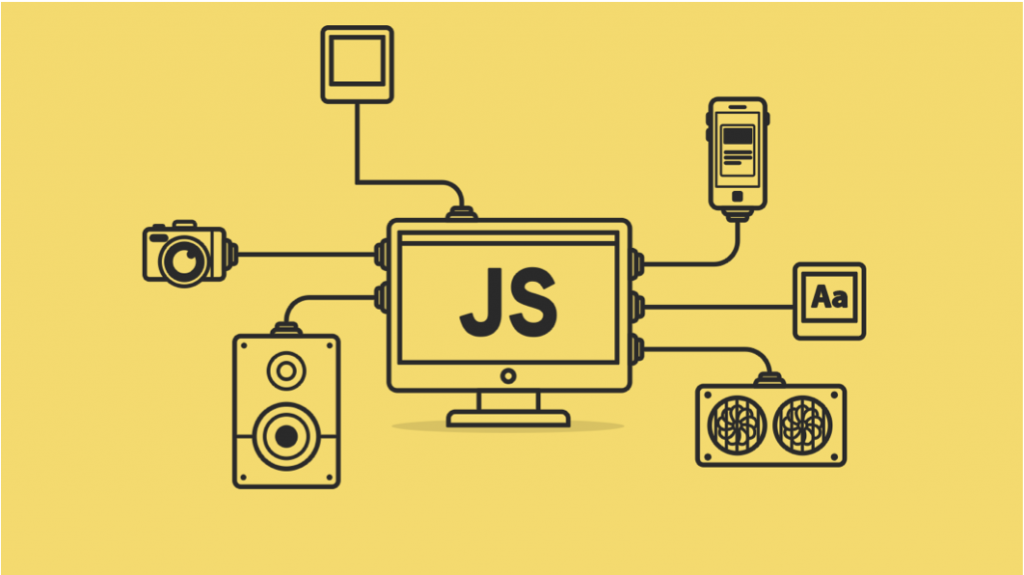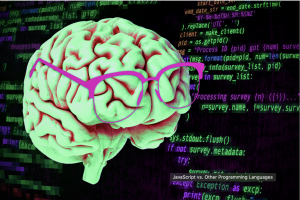You’ve probably heard of JavaScript (JS) before, but can you answer “What is JavaScript”? And even more importantly, do you know what JavaScript is used for? In this article, we take an overview of this popular programming language. Thus, we provide you with all the basics you need to know about it. You will also learn how JS enables you to start developing the most advanced decentralized apps (dApps) fast and easily. That is possible when using the super-powerful platform Moralis. The latter takes care of the back-end aspect of Web3 development. As such, it makes the creation and deployment of decentralized apps fast and much simpler.
If you are interested in becoming one of the most sought-after developers, you should definitely learn to make full use of Moralis. You can create your free account today and start learning. However, since JS knowledge is one of the prerequisites to using Moralis, you need to first learn JavaScript. We’ve previously covered Web3.js and how to use JavaScript in a Web3 context. Nevertheless, this article seeks to dive deeper into the basics of JavaScript, to give a comprehensive overview of what JavaScript is.
Moreover, as Web3 becomes increasingly commonplace, learning JS with an intent to use it for developing dApps makes the most sense. Thus, one of the best courses to learn JavaScript in 2021 and beyond is without a doubt the JavaScript Programming for Blockchain Developers course at Ivan on Tech Academy – sign up today! As such, you’ll be able to make the most of Moralis’ powerful features. Answer the question “what is JavaScript?” and learn to become more proficient with it by reading our comprehensive JavaScript guide!
What is JavaScript?
In short, JavaScript is one of the most popular programming languages. It is primarily used for web programming, and especially making web pages interactive. It achieves this by its ability to update and change both HTML and CSS, which are the backbone of Web2 websites. As JavaScript operates on top of HTML and CSS, JavaScript is often referred to as the third layer of Web2. So, every time you see a webpage do more than just display static content, JavaScript is most likely involved.

Moreover, JS is a text-based coding language. This makes both learning and using it quite intuitive, presuming you know English. By using JavaScript in web development, you are able to create dynamically updating content. That way you are able to control multimedia, animate images, and offer an advanced user experience to the website visitors. Of course, JavaScript is not only used for webpages but more on that later on.
The 3 Layers of Web2 – HTML, CSS, & JavaScript
In order to ensure you get the best understanding of what JavaScript is, basic HTML and CSS understanding is essential. However, before we take a closer look at that, let’s define Web2.
Web2 is the web you know today. It is responsive and dynamic. Web2 are basically all the modern web pages that not only display content but also allow certain interactions. On the other hand, Web3 uses blockchain technology to provide decentralized internet with built-in digital money (e.g. cryptocurrencies) transfer capabilities and smart contracts.

HTML – HyperText Markup Language
HTML is a standard markup language that provides the structure for web content. Only when the content is structured can it provide proper meaning. For instance, defining headings, paragraphs, data tables, embedding images and videos on-page, and much more is done with HTML. People often refer to HTML as the first layer of Web2.
CSS – Cascading Style Sheets
As its name suggests, CSS is all about style. It is used to describe the presentation of a document (e.g. webpage code) written in a markup language. Moreover, it is the coding language that assigns colors, fonts, laying content in columns, and more. Thus, CSS is often referred to as the second layer of Web2.
Learn JavaScript – Quickstart
Considering that JavaScript can calculate, manipulate, and validate data, you need to know a thing or two about JS variables. The latter are essentially containers for storing data values. Moreover, they come in different types, including numbers, strings, objects, arrays, and functions.
Furthermore, variables are defined as ‘var’ (e.g.: var x = 3). The example stores value 3 for variable ‘x.’
JavaScript Numbers
JS considers only one type of number, and programmers may write the numbers with or without decimals. Moreover, it automatically stores numbers as double-precision floating-point numbers. However, the actual maximum number of decimals is 17. Though, the accuracy of the floating-point is not always 100%. For example, defining var x = 0.1 + 0.2, gives x of 0.30000000000000004.
JavaScript Strings
JS coders use strings to store text. They write them within quotes (e.g.: var carmodel = “Mercedes CLS” or var carmodel = ‘Mercedes CLS’). As you can see, both single and double quotes work just fine. Furthermore, to enable more versatile use of strings, JavaScript comes with many built-in string properties. The most common one is ‘.length,’ which finds the length of a string.

JavaScrip Objects
Looking at the above two variable types, you can see that they can hold only a single value. However, many cases require assigning multiple values to a specific variable. This is what JavaScript objects are for. To define objects, you need to use curly brackets.
Let’s look at the example: var car = {brand: “Mercedes”, model: “CLS”, color: “black”}
JavaScript Arrays
Similar to objects, JavaScript arrays are also able to store multiple values in a single variable. Instead of using curly brackets, they use square ones. However, they hold multiple values, without the “description” part.
Looking at the following example can illustrate this, as in: var cars = [“Mercedes”, “BMW”, “Ford”]
JavaScript Functions
JS functions are blocks of code that perform particular tasks. In order for a JavaScript function to perform that task, programmers need to determine what will invoke it or “call it.”
Here is a simple example of a function, which will return a product of the two variables when the code invokes it:
function exampleFunction(s1, s2) {
Return s1 * s2;
}
We’ve now covered the JS basics, which should give you some clues as to how JavaScript works. Do you find it interesting? It takes some getting used to, but when following clear and simple instructions, you can learn JS very fast. Moreover, as soon as you acquire some basic JavaScript knowledge, you’ll be able to leverage this through Moralis’ serverless Infrastructure-as-a-Service and do everything from build decentralized apps to create Ethereum tokens and much, much more. Be sure to check out Moralis today – it’s completely free!
What is JavaScript Used For?
If you’ve covered the above two sections, you’ll already have a basic understanding of this popular programming language. With that knowledge base, you are ready to take a closer look at what JavaScript is used for.
Primarily, JS is used for web browsers and web-based applications. However, this popular coding language is also used in servers, software, embedded hardware controls, and more. Below we take a closer look at some of the most common use cases.
Adding Interactive Capabilities to Web Pages
When it comes to making basic interactive web pages, JavaScript is the king. The sky’s the limit as you can do basically anything you can think of with JavaScript on a web page. To give you some clues, we list some examples:
- Using a drop-down hamburger menu
- Changing the color of a button on mouse hover
- Ability to slide through a carousel of images (typically on a homepage)
- “Show more info” buttons
- Zooming in/out on an image
- Displaying animations
- Playing a video on a web page
- Playing audio on a web page
Building Web Servers & Server Applications
Developers also have the possibility to use the JavaScript framework for building simple web servers. Using Node.js, JS developers can easily create the back-end infrastructure. Node.js is a JavaScript runtime environment that many popular companies, including LinkedIn, Netflix, Uber, and PayPal use.

Developing Web & Mobile Apps
By using JavaScript frameworks, developers are able to create all sorts of web and mobile apps. Since JS frameworks are collections of JavScript code libraries, they make things much simpler. That way developers have access to pre-written codes for specific features and tasks. Some of the most popular front-end frameworks include Angular, Vue, React, and React Native.
Moreover, thanks to its popularity and a great number of users, JavaScript has extensive and excellently up-to-date code libraries.
Creating Games
Many of the browser games you know and love use JavaScript. In fact, building browser games is a great way for beginner developers to practice their JS coding skills. This can many times lead to simple yet enjoyable online games. If you want to code something akin to an NFT game, however, be sure to use the Moralis NFT API!
JavaScript vs. Other Programming Languages
Nevertheless, there are many other programming languages beyond JavaScript. The simple answer as to why, is that different programming languages have different strengths and use cases. Even though it is always best to strive to learn several programming languages in the long run, you need to start somewhere. For beginners, JavaScript is the one coding language you can benefit from the absolute most. On top of that, you can easily combine it with Moralis and thus immerse in the booming, future-proof blockchain industry super easily.
Here are some of the most important arguments that put JavaScript at the very top:
- It offers an accessible entry point to coding.
- JavaScript is the most popular language according to Stack Overflow (things are popular for a reason).
- If you speak English, it is not too difficult to learn.
- It tends to be fun to learn as it is very interactive.
- Thanks to its popularity, it has very good support (many forums, communities, libraries, etc.).
- There are great debugging tools available for it.
- JS is the premier coding language native to web browsers.
- It is a great foundation to learn other programming styles and languages.
- You can use it with Moralis to develop Web3 applications fast and easily.
Best ‘Learn JavaScript’ Strategy For Beginner Developers In 2021 And Beyond
We at Moralis have a long experience of collaborating with frontend, backend, and full-stack developers. As such, we’ve come up with the best strategy for beginner developers to learn JavaScript. We’ve called it the ‘Learn JavaScript’ strategy. Here is the gist of it:

Step #1: Learn JavaScript
You don’t have to become a JavaScript master straight away. Just learn the basics and start putting it to work – you learn best when you practice. As such, when you come to a point where you need to learn something new, you immediately do so. Luckily there are many high-quality options to learn JavaScript these days.
However, not many include a clear focus on blockchain technology. As such, we honestly dare to say that the course mentioned above is the best option.
Step #2: Use Moralis For Fast & Easy dApp Creation
In case you’ve been living under a rock, you may haven’t heard of blockchain technology yet. But you’ve definitely heard of Bitcoin and cryptocurrencies, right? Well, they are all use cases of the blockchain technology applied in the financial sector.
However, blockchain is much more. It is basically as big of a deal as the invention of the internet, if not bigger. As such, it will disrupt all major industries in the next decade or so. Sooner rather than later, most online operations will make the transition to the decentralized web (from Web2 to Web3).
However, working with Web3 backends can be rather difficult and hugely time-consuming. As such, we’ve decided to create a powerful platform to solve these challenges. Thus, Moralis was born. This super-powerful platform offers full Web3 backend management infrastructure. It is compatible with all major blockchains, and our team is constantly adding new reputable ones.
Here’s a good analogy to grasp what Moralis is: Moralis does for blockchain what Windows and iOS do for PCs, and what AWS does for the internet. Put simply, it’s a huge deal!
Using JavaScript in combination with Moralis, you can devote your attention to the frontend aspect of a project. Moralis solves all the backend challenges for you, with simple lines of code.
What is JavaScript? – Summary
We’ve covered quite a lot in the sections above. You now know that JavaScript is the most popular programming language with multiple use cases. Moreover, it is the only coding language native to Web browsers. We’ve also covered what is JavaScript used for. So at this point, you already know that programmers primarily use it for frontend web pages and web and mobile apps development.
Furthermore, we’ve presented you with some JavaScript basics by looking at JS variables. We also did a quick overview of JS in comparison with other coding languages. The latter helped us determine that it is the best option for beginner developers. As such, we’ve presented you with the ‘Learn JavaScript’ strategy. In addition, you’ve also learned about Moralis, the ultimate Web3 development platform, where you can create dApp with JavaScript fast and easily. That’s quite a lot of useful information, so make sure to put it to use. Kickstart your dApp development with just JavaScript and Moralis today!
